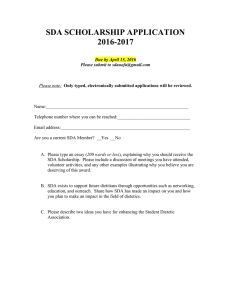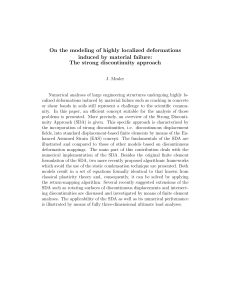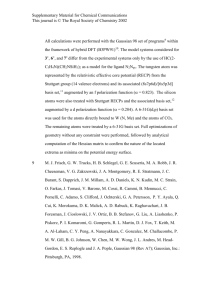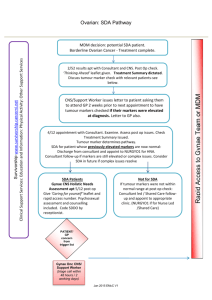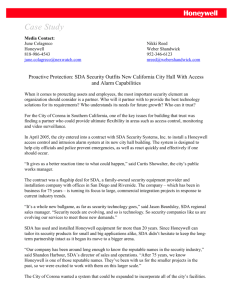Supplemental_Material_MS_A09.05.0035_Sep.26
advertisement
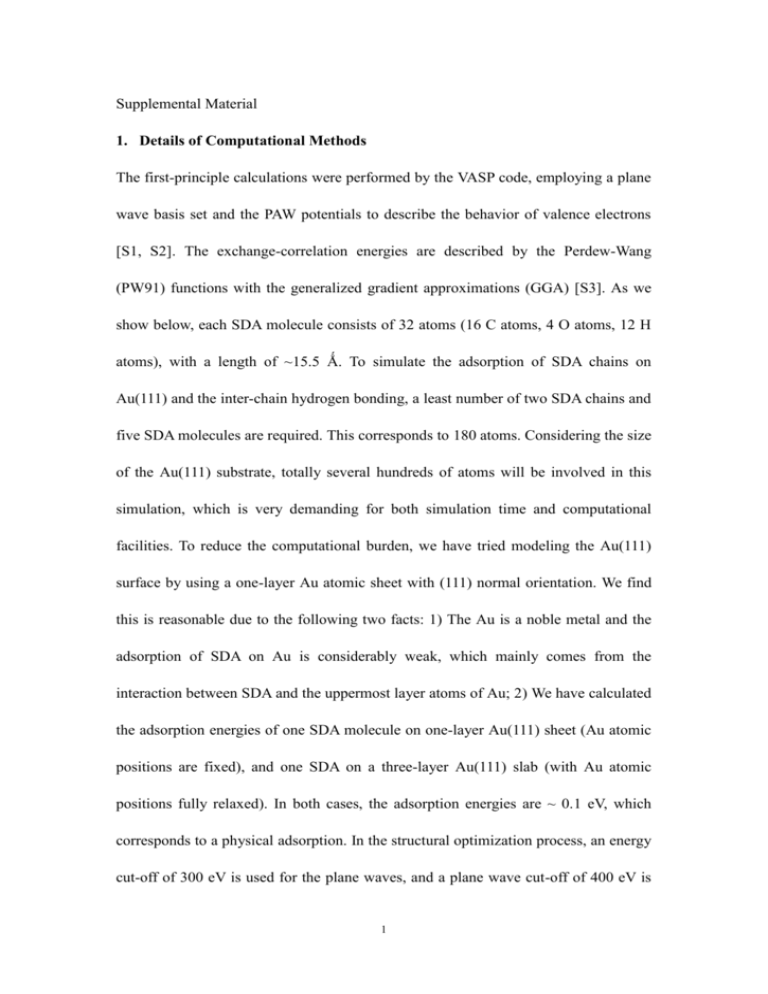
Supplemental Material 1. Details of Computational Methods The first-principle calculations were performed by the VASP code, employing a plane wave basis set and the PAW potentials to describe the behavior of valence electrons [S1, S2]. The exchange-correlation energies are described by the Perdew-Wang (PW91) functions with the generalized gradient approximations (GGA) [S3]. As we show below, each SDA molecule consists of 32 atoms (16 C atoms, 4 O atoms, 12 H atoms), with a length of ~15.5 Ǻ. To simulate the adsorption of SDA chains on Au(111) and the inter-chain hydrogen bonding, a least number of two SDA chains and five SDA molecules are required. This corresponds to 180 atoms. Considering the size of the Au(111) substrate, totally several hundreds of atoms will be involved in this simulation, which is very demanding for both simulation time and computational facilities. To reduce the computational burden, we have tried modeling the Au(111) surface by using a one-layer Au atomic sheet with (111) normal orientation. We find this is reasonable due to the following two facts: 1) The Au is a noble metal and the adsorption of SDA on Au is considerably weak, which mainly comes from the interaction between SDA and the uppermost layer atoms of Au; 2) We have calculated the adsorption energies of one SDA molecule on one-layer Au(111) sheet (Au atomic positions are fixed), and one SDA on a three-layer Au(111) slab (with Au atomic positions fully relaxed). In both cases, the adsorption energies are ~ 0.1 eV, which corresponds to a physical adsorption. In the structural optimization process, an energy cut-off of 300 eV is used for the plane waves, and a plane wave cut-off of 400 eV is 1 used for the calculation of inter-molecular interactions. References: [S1] G. Kresse and J. Hafner, Phys. Rev. B 47, 558(1993); 49, 14251(1994); G. Kresse and J. Furthmüller, Comput. Mater. Sci. 6, 15(1996); Phys. Rev. B 54, 11169(1996). [S2] P. E. Blöchl, Phys. Rev. B 50, 17953 (1994); G. Kresse and D. Joubert, Phys. Rev. B 59, 1758 (1999). [S3] J. P. Perdew, J. A. Chevary, S. H. Vosko, K. A. Jackson, M. R. Pederson, D. J. Singh, and C. Fiolhais, Phys. Rev. B 46, 6671(1992). 2
